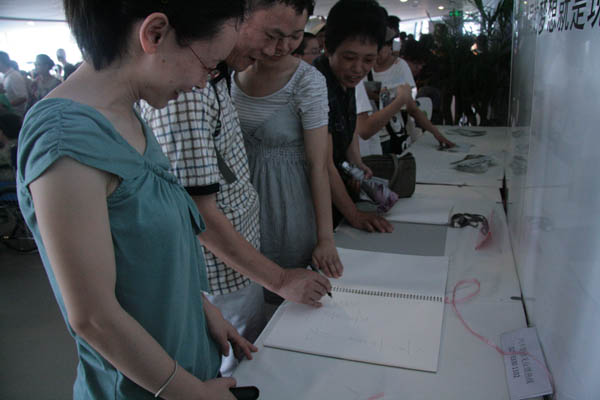Drive to 2030
"The vision we presented through the film is within reach in the next 20 years, maybe even earlier, in 15 or 18 years, with technologies including electrification, connectivity and autonomous driving," said Liu.
However, Liu said, it is a mission that cannot be accomplished by the auto industry alone. The project needs concerted efforts from all of society and various industries.
After the film, visitors get a close look at the two concept car models, GM's EN-V and SAIC's YeZ "Leaf," which appear in the film. The GM model features zero-emission, autonomous driving and also has a sophisticated GPS-sensor system that enables it to detect surrounding traffic conditions and respond quickly. The YeZ "Leaf" is a negative-emission concept car which gathers carbon dioxide and water molecules from the environment, just as real leaves do, and converts them into power through a series of chemical reactions, which actually produce oxygen.
"We hope to get people thinking about the future city by giving them a clear picture of what the future is," said Jin Qi, managing director of the pavilion.
Their efforts have paid off.
The pavilion received nearly 700,000 visitors since the Shanghai World Expo opened May 1. The 4-D theater is filling seats, with 13,000 visitors per day.
A message book at the exit of the pavilion captures visitors' excited expectations for the future of transportation.
"Let's strive together for a better 2030," reads one note.
| Visitors write down their wishes on a message book at the exit of the SAIC-GM Pavilion.[Yuan Fang/China.org.cn] |
 |
| A message reads "Let's strive together for a better 2030" at the SAIC-GM Pavilion.[Yuan Fang/China.org.cn] |
Theme: Drive to 2030
Location: Zone E of the Expo Park
Total Area: Approximately 6,000 square meters
Key Feature: A 4-D movie about future urban transportation
 0
0 







